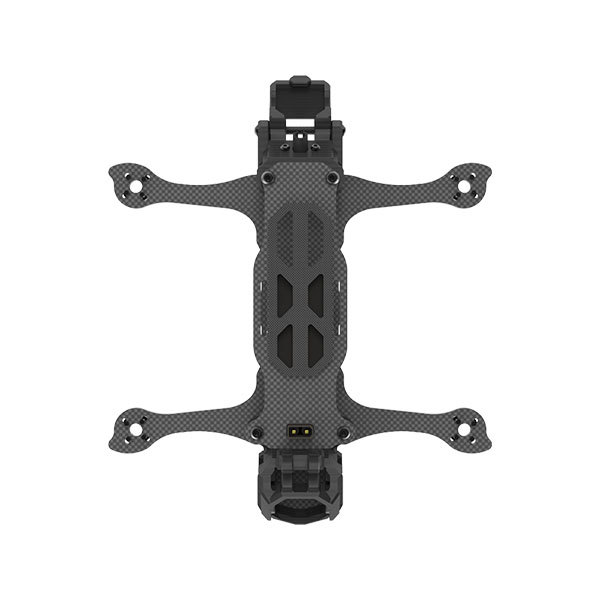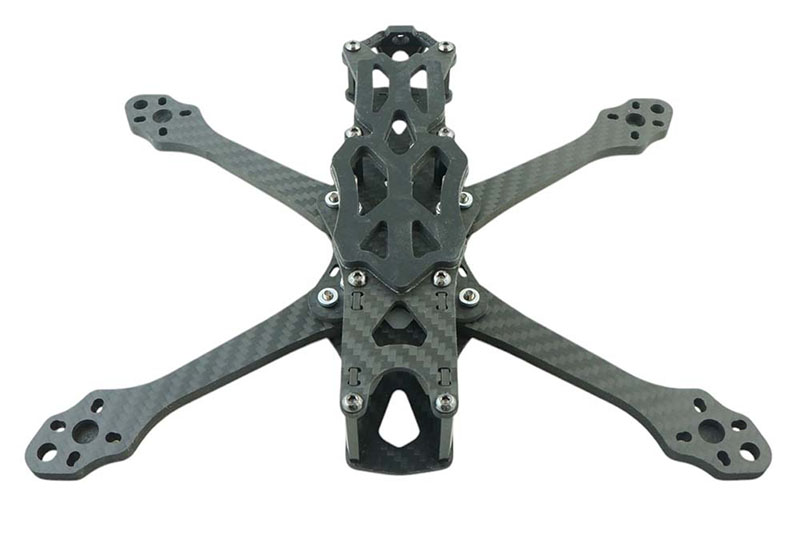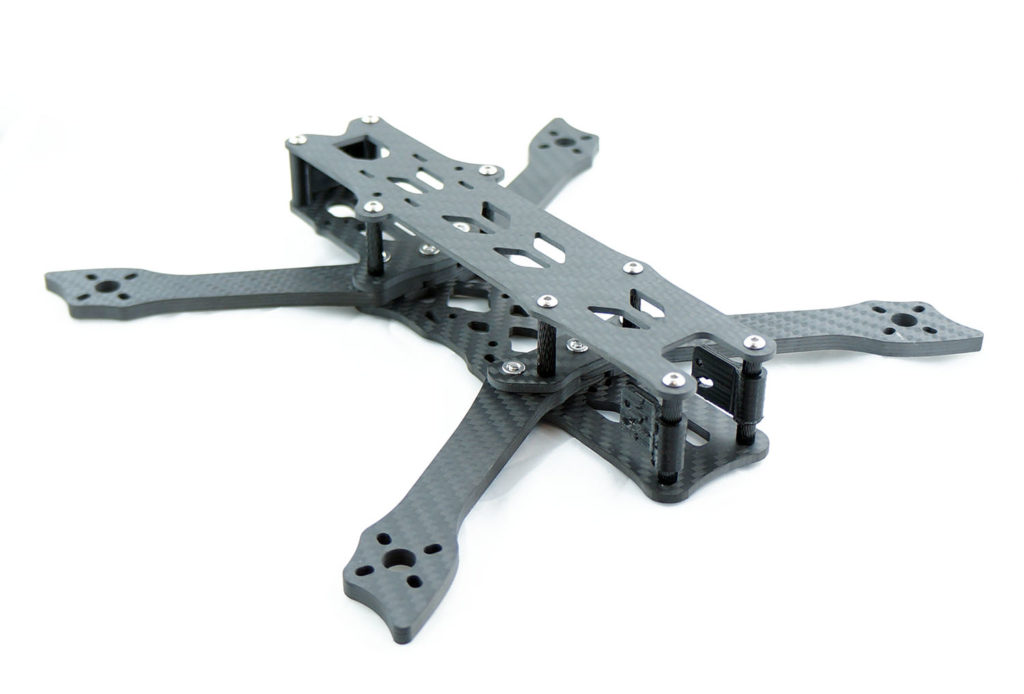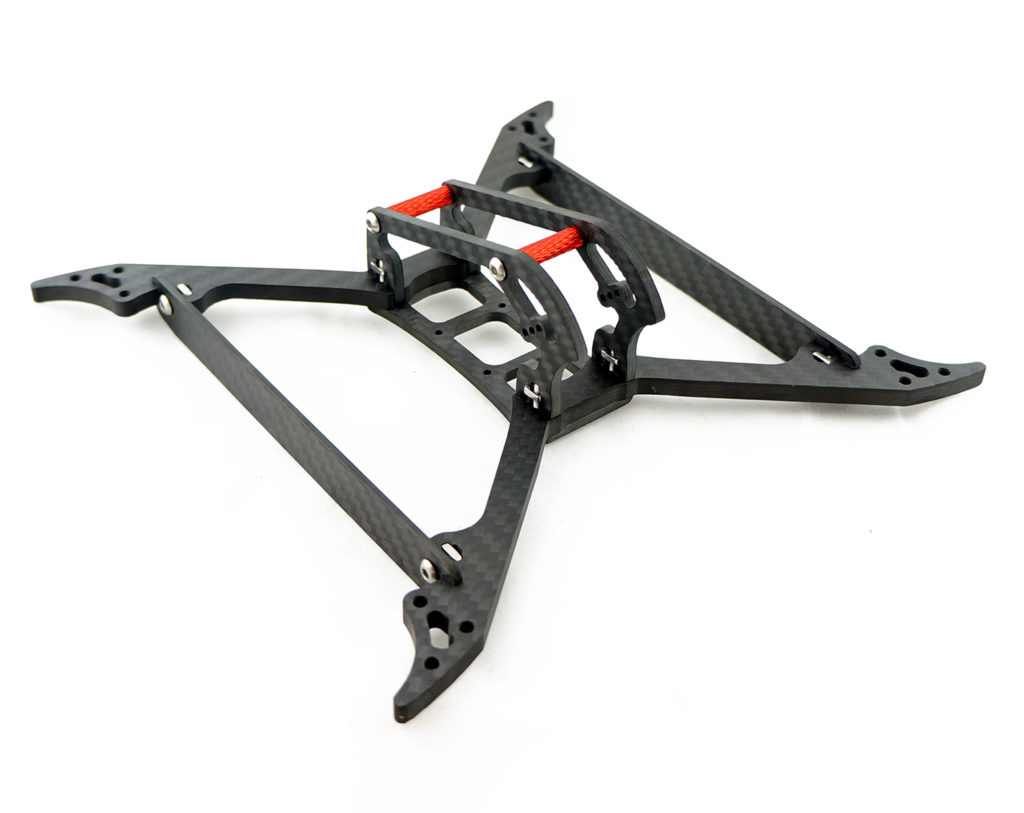Frames
The frame is the foundation of the whole drone — it’s the structural chassis to which all other components are mounted. It affects not only overall strength and weight but also flight characteristics, maintenance and serviceability. When choosing a frame, make sure it’s comfortable to build, offers enough room for your electronics, and lets you place all parts easily without complex mods. Larger frames are generally easier to build and more suitable for beginners, because they provide more space to work with electronics and enable cleaner cable management. The weight of the frame is crucial — the heavier it is, the more it demands from motors and the battery. On the other hand, frames that are too light can be fragile and less durable in crashes.
Today, using carbon fiber is the absolute standard. This material offers an ideal combination of low weight, high stiffness/strength, and vibration resistance. Carbon frames are usually made from several plates of different thicknesses. The arms are typically cut from the thickest carbon to withstand crashes. The market offers countless shapes and variants that mainly differ in arm layout. The most common are H, True-X, Wide-X, Stretched-X and Deadcat configurations.
H is an older shape where the arms form the letter “H”. It provides plenty of space for electronics, but comes with larger dimensions and higher weight.

True-X means the distance between each motor is the same in all directions — the quad has perfectly symmetrical geometry. This layout provides the most balanced handling on all axes and is very popular for aggressive freestyle as well as racing frames.

Wide-X spreads the motors farther to the sides. It’s common on freestyle frames to keep the frame as compact and light as possible. In contrast, Stretched-X has a longer motor spacing on the longitudinal axis. The rear props should then be less affected by the turbulent wash of the front props. This configuration is common mainly on fast racing frames.

The Deadcat layout shifts the front arms slightly backward and outward so the propellers stay out of the camera’s view. Deadcat frames are especially suitable for quads with digital video systems where the FPV camera is also used for recording footage and protruding props are distracting. A downside is a slightly different control response on each axis due to the asymmetric arm layout.

Frame types
We divide frames into several types according to their intended use. Each type has a different construction, weight distribution and arm shape, which affects not only flight characteristics but also the build process and suitability for different flying styles.
Freestyle
Freestyle frames usually have an elongated center section and plenty of room for components and clean wiring. The top plate has space for an HD camera and a battery. These frames are robust, durable and stable, which beginners especially appreciate. Thanks to their larger size they are easy to build and maintain. Freestyle frames range from small 2" up to large 15" builds.
Racing
Racing frames are minimalistic, lightweight and durable. Every millimetre of space is used to keep the frame as small and aerodynamic as possible. The battery is usually mounted on the bottom. These frames are built with emphasis on low weight and maximum agility. Due to the compact dimensions it can be harder to install larger accessories such as GPS or a beeper. Race designs are often True-X or Stretched-X.
Whoop
Whoop frames have ducted/guarded propellers. This includes the smallest Tinywhoops for indoor flying or Cinewhoops for FPV filmmaking. Thanks to the ducts they are safer, but have higher weight and greater aerodynamic drag. The ducts are typically plastic or carbon. They’re not as agile, are louder, and offer shorter flight times compared to classic open-prop quads. Cinewhoops are used almost exclusively for filmmaking and indoor fly-throughs. Sizes range from 1.2" through the classic 3" up to large 6" platforms for carrying cinema cameras.


Toothpick
Toothpick is an ultralight frame usually in an X layout with a minimalist construction and a small plastic canopy. The goal is to be as light as possible. Thanks to the low weight it achieves surprisingly long flight times even on small batteries and feels very responsive. It’s used mainly for micro freestyle and park flying where low noise is desired. Typical sizes are 1.6–3".



